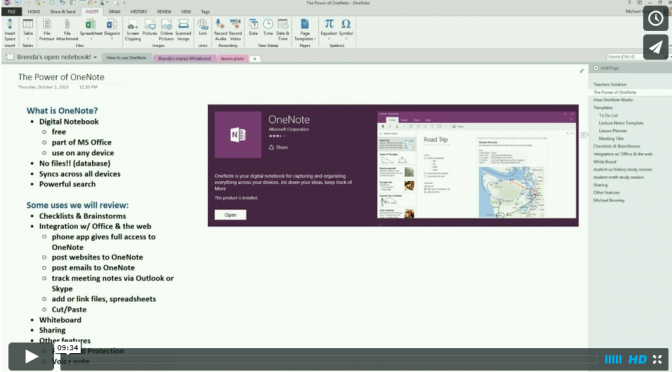The Bing Homepage on March 22 features “World Water Day,” a United Nations’ sponsored theme to promote awareness of the need for freshwater around the world.
* Above photo titled: ” Children getting water from the faucet in the slum area in Yauco, Puerto Rico,” 1942, Library of Congress
Thoughts of freshwater remind me about how lucky we are to have on-demand, clean water.
The lady who takes care of my 87 yo father-in-law is from Sierra Leone. She grew up in a small, rural village and had to walk several miles each day to get water from a well or a stream. It was dangerous and the water was often putrid.
It’s hard to imagine but even today yellow fever and malaria are prevalent in Africa and other third world regions and sicken millons and kill tens of thousands of people each year. During this time of the coronavirus, we may count our blessings that we don’t also face these other diseases which our nation conquered long ago.
Below is the story of how yellow fever and malaria were defeated. Meanwhile, when you turn on the faucet, say a little thanks for all the amazing ideas, people, and political systems that allow you clean water on demand.
How Yellow Fever and Malaria Were Defeated in the U.S., Cuba and Panama
Topics:
- History of disease
- Use of geography in scientific research of disease
Vocab:
- Cholera: bacterial infection that spreads through contaminated water or food, largely due to unsanitary conditions; cholera is rare now)
- Yellow fever: a virus disease spread by a certain type of mosquito and that causes a yellowish tint to the skin due to liver damage; Yellow fever is eradicated from North America but still impacts Africa significantly, causing approx.. 45,000 deaths each year)
- Plague: (a bacterial disease caused by Yersinia pestis and spread by fleas or exposure to an infected animal; the plague is rare, with about 600 cases per year)
- Locus of infection: the geographic origin of a disease outbreak
- Disease vector: the carrier or transmitter of a disease (such as a mosquito)
- Pasteurization: mild heating of fresh water, milk, juice, wine and other foods that destroys pathogens while maintaining nutrients and allowing for greater shelf-life of the food or drink.
- Germ Theory: the theory, developed in the mid-1800s, that identified a microorganism called pathogens, or germs, that cause infectious disease
People
Louis Pasteur: scientist who invented the pasteurization process and developed the Germ Theory
Maj. Walter Reed: U.S. Army physician who in 1900 identified the pathogen and vector of yellow fever transmission
Surgeon General George Miller Sternberg: U.S. Army physician who pioneered biomedicine in the United States in the late 19th and early 20th centuries
Dr. Carlos Finlay: Cuban physician who in 1870 proposed that mosquitos were the transmitting agent, or disease vector, of yellow fever
During a particularly bad cholera outbreak in London known as the “1854 Broad Street Outbreak,” British physician John Snow discovered that cholera is not an airborne disease but was spread by bad water. He isolated the source of the cholera to a public water pump that had been contaminated by sewers and was spreading cholera to people who drank from it. Until then, people thought that cholera was spread by the air or touch, as are some viruses. He proved it was ingested, and then used his knowledge of London geography to isolate the location of the pump based upon prevalence of illnesses in that section of the city. (By tracking the location of crimes, police use this same method to catch criminals.)
Using a similar geographic approach, Maj. Walter Reed, a U.S. Army physician, confirmed that yellow fever had a different “disease vector” than previously thought. While stationed in Washington, D.C., Reed observed that Army troops who suffered from yellow fever were regularly hiking through swamps along the Potomac River. It was thought they suffered from yellow fever from drinking from the river (yuck!), but Reed confirmed that the river was not the disease vector, as others who drank from it (again, yuck!) but did not hike through the swamps did not get the disease. Reed didn’t know exactly why the swamps transmitted the disease, but he knew that hiking through the swamp was the one commonality of the soldiers who suffered from yellow fever.
The geographic source of an outbreak is known as “the locus of infection,” and pioneers such as Dr. Snow (who isolated the source of cholera in London) and Reed greatly advanced the science and treatment of disease through these observations.
Beforehand, people thought that diseases came from “vapors,” mud, or other things that had no relationship to the actual spread of disease, which often led to a worsening of outbreaks. For example, during the Medieval and Late Medieval periods in Europe, cats and snakes were considered “diabolic” and treated as pests to be removed. However, by ridding their towns of cats and snakes, the Europeans worsened the spread of the bubonic plague, which was carried by fleas and spread by rodents — which cats and snakes would have otherwise killed off. *
* Another devastating misunderstanding of science and causality led the Chinese government in 1958 to declare the “Eliminate Sparrows Campaign” to eradicate sparrows which they believed were capitalist pets and that were destroying crops. However, by killing off the birds, insects proliferated, including locusts, which destroyed crops and contributed to the Great Famine of 1959-61, in which millions of Chinese died.
Back to Walter Reed.
Reed’s superior, Surgeon General George Miller Sternberg, was a pioneer in the study of “bacteriology” and a follower of Louis Pasteur’s “germ disease theory” that had identified pathogens (a microorganism), or “germs,” as contributors to disease. (“Pasteurization” of milk and other foods that kill dangerous bacteria is named for Pasteur). General Sternberg sent Major Reed to Cuba, which the U.S. Army had occupied following the Spanish-American War, in order to further investigate yellow fever and other “tropical diseases” which were impacting U.S. personnel.
In the 1880s, the Cuban physician, Dr. Carlos Finlay, had hypothesized that mosquitoes from the genus Aedes were responsible for transmitting yellow fever by biting an infected person and then spreading it to someone else through another bite. Already aware of the locus of infection of yellow fever in the DC swamps, and familiar with Dr. Finlays’ ideas, Reed and the “U.S. Army Yellow Fever Commission” implemented a scientific process to identify the particular pathogen and disease vector of yellow fever. By deliberately exposing himself and a few others to yellow fever, Reed proved that the Aedes aegypti mosquito spread yellow fever bacterium through bites of an infected and then of another person. Now the path to eradication of yellow fever, proposed 20 years earlier by Dr. Finlay, was proved: mosquito control. As a result, yellow fever effectively disappeared from Cuba.
The U.S. Army then applied the strategy to Panama where the Canal was beginning construction. Previously, yellow fever and malaria there were thought to have come from the bad air of jungles and swamps of Panama.
An earlier French project (1881-94) to build an isthmus canal across Panama had failed in large part due to the high mortality rate of workers from malaria and yellow fever, having lost 200 workers a month. Ironically, at a “fever ward” in Panama built by the French, patients suffering from malaria and yellow fever were kept in hospital beds with the legs placed in cans of water in order to keep ants from crawling up. Sadly, these pails of water merely served to breed more mosquitoes that spread more malaria and yellow fever.
Armed with Dr. Finlay’s theory and Maj. Reed’s proof, by clearing standing water and using screens and fumigation to control mosquitoes, Colonel William Gorgas of the U.S. Army eradicated both yellow fever and malaria in Panama, and the Canal construction, one of the greatest human projects in history, went forward.
While Walter Reed died in 1901 of appendicitis, the U.S. Army named its most important hospital for him, Walter Reed General Hospital, opened in 1909 in Washington, DC.
Dr. Finlay lived until 1915 and thus saw the historic and life-saving application of his ideas.
By controlling mosquitoes, two of the great scourges of mankind, yellow fever and malaria, were successfully controlled. While we here in the United States no longer worry about these diseases, both continue to afflict people around the world in impoverished areas that suffer from poor water drainage and sanitation and a lack of modern, controlled fresh water sources.
(I bet you didn’t think I’d get back to World Water Day!)
Sources:
https://www.medicalmuseum.mil/index.cfm?p=about.directors.reed
https://panama.lindahall.org/fighting-fever/
Wikipedia (various articles)
And here for an original article from 1897 by Italian Prof. Sanarelli claiming, incorrectly, that the bacillus iteroides bacterium was responsible for yellow fever: https://www.bmj.com/content/2/1905/7 Walter Reed proved Prof. Sanarelli wrong.
– Michael
Update: I just read that the rebuilding of Paris in the 1870’s with wide boulevards was intended to allow more sunlight onto the streets in order to reduce cholera outbreaks.




 What’s best for school, a laptop, tablet, or PC?
What’s best for school, a laptop, tablet, or PC?
 Seemed like a good idea at the time…
Seemed like a good idea at the time…






1. Input Box code:
message=InputBox(“Type in the box to say it!”)
set sapi = CreateObject(“sapi.spvoice”)
sapi.Speak message
2. Simple text narrator:
Dim message, sapi
Set sapi=CreateObject(“sapi.spvoice”)
sapi.Speak “woof”